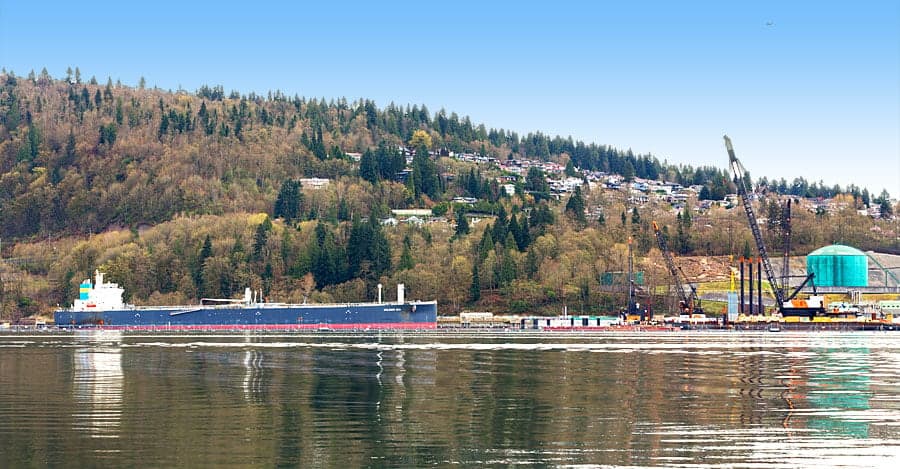Very few of the 300,000 barrels of oil the existing Trans Mountain line ships from Alberta to Canada’s Pacific coast are making their way to Asia.
The promise of shipping more Canadian crude to fast-growing importers like China and India – and relying less on the US – drew Prime Minister Justin Trudeau’s government into shelling out $3.5 billion for a pipeline project that was facing abandonment. Whether that gamble will pay off is anything but certain.
With US President Donald Trump’s trade wars showing no sign of abating, and pipeline bottlenecks damping prices for Canadian crude, the Trans Mountain pipeline expansion may seem like a godsend for Canada. But lost in the debate over the government’s purchase from Kinder Morgan is the fact that very few of the 300,000 barrels of oil and refined fuels a day the existing Trans Mountain line ships from Alberta to Canada’s Pacific coast are currently making their way to Asia.
In the past year, only two of the 48 tankers that entered the Westridge Dock or Parkland Burnaby terminals have departed directly for Asia, according to data supplied by Bloomberg. One of those vessels left for South Korea in April, and the other departed for China earlier this month. Both were carrying an estimated 550,000 barrels of crude.
The result is that essentially all of Canada’s crude oil exports for the first four months of the year have gone to the US, according to National Energy Board statistics. Some doubt that the Trans Mountain expansion will change that trend.
The idea that Trans Mountain will help Canadian producers get better prices in Asia is “fiction,” economist Jeff Rubin told Bloomberg. “The highest prices for heavy oil are in the US Gulf, and that’s because that’s where the greatest amount of heavy-oil refinery capacity is.”
Last year, about 54 percent of the volume carried on Trans Mountain was crude oil shipped to Washington State refineries via the Puget Sound System, according to the pipeline’s website. About 42 percent of the line’s crude and refined products made it all the way to the Burnaby storage terminal and the Westridge marine station. The remainder ended up at a refined-products storage facility in Kamloops, British Columbia.
Kinder Morgan Canada expects that most of the added capacity to the line will be for exports from Westridge destined for markets including Washington, California and Asia. However, actual destinations will depend on market conditions, the company said.
For now, Trans Mountain crude is going mostly to US West Coast refiners that have grown increasingly reliant on imports amid declining production from Alaska and California. US West Coast refineries received 454 million barrels of crude from outside the US last year from countries including Saudi Arabia, Canada and Colombia.
But once the Trans Mountain expansion is complete, and an additional 590,000 barrels of oil are flowing to the coast, more oil will be available for export. Right now only about 25,000 barrels of oil a day from Trans Mountain is left over and available for export.
Asian refiners are likely to be interested in obtaining some of that supply. China has refining capacity for the heavy crudes produced by Canada and Saudi Arabia, as well as its own domestic production. The appeal of Canadian crude is that the oil sands produce predictable, steady supplies with little geopolitical risk and reservoirs that are forecast to last around 50 years.

